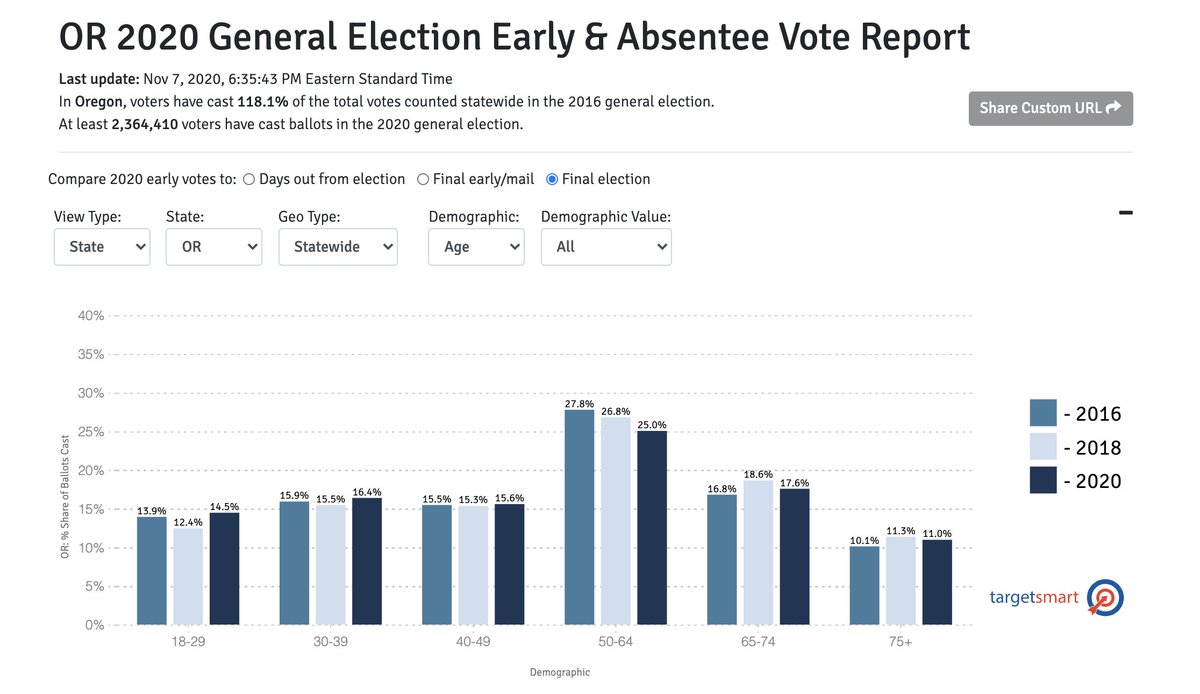
Some have suggested that the driving force behind the GA suburbs going blue was white voters switching from Trump in '16 to Biden in '20. And yes, that was a factor, but likely not nearly as significant as has been suggested. Some evidence...
Here's a breakdown of the suburban vote in Georgia over the last 3 cycles. Note that Black, Asian, and Latino voters all increased their electorate shares substantially over '16, collectively by 3.7 pts. 

Meanwhile, white non-college voters saw their vote share plummet from 2016 by a whole 5 points (that's incredible). White college voters increased slightly as a share of the electorate. Fewer white non-college suburban voters cast a ballot in GA this year than did in '16.
Collectively, turnout in the GA suburbs among voters of color and white college-educated voters increased by 291k votes over 2016, while white non-college turnout actually dropped by 11k votes. Dems won the turnout game in the GA suburbs through a very diverse coalition.
A youth vote surge was also key to the blue surge in the Georgia suburbs. No group surged more than voters under the age of 30, relative to 2016. 

Keep in mind, the youth vote in Georgia is more diverse than the older cohorts. Just over 10% of those 2020 voters under the age of 30, statewide, were Asian American or Latino voters, while just over 30% were African American. 

A few more interesting Georgia facts (not just limited to the suburbs):
- Almost 45% of those voters casting a ballot in their first election were voters of color. 6.6% of first time voters were AAPI voters, even though they only account for 2.5% of registered voters in the state
- Almost 45% of those voters casting a ballot in their first election were voters of color. 6.6% of first time voters were AAPI voters, even though they only account for 2.5% of registered voters in the state

31.1% of the voters in Georgia in the general election didn't vote in 2016. That's 1,550,196 voters. The Dem margin among these voters was 13 pts higher than among those who did vote in '16. 35% were unmarried women. 

How did Dems flip a US House seat in GA CD 7? Huge turnout among voters of color. AAPI voters more than DOUBLED their vote total from 2016, along with a large surge of Latino and Black voters. 

About those AAPI (Asian-American/Pacific Islander) voters who helped flip GA CD7: more than 1 in 5 are under the age of 30. Almost 1 in 3 had never voted before they cast their ballot in the 2020 general election. 



• • •
Missing some Tweet in this thread? You can try to
force a refresh










